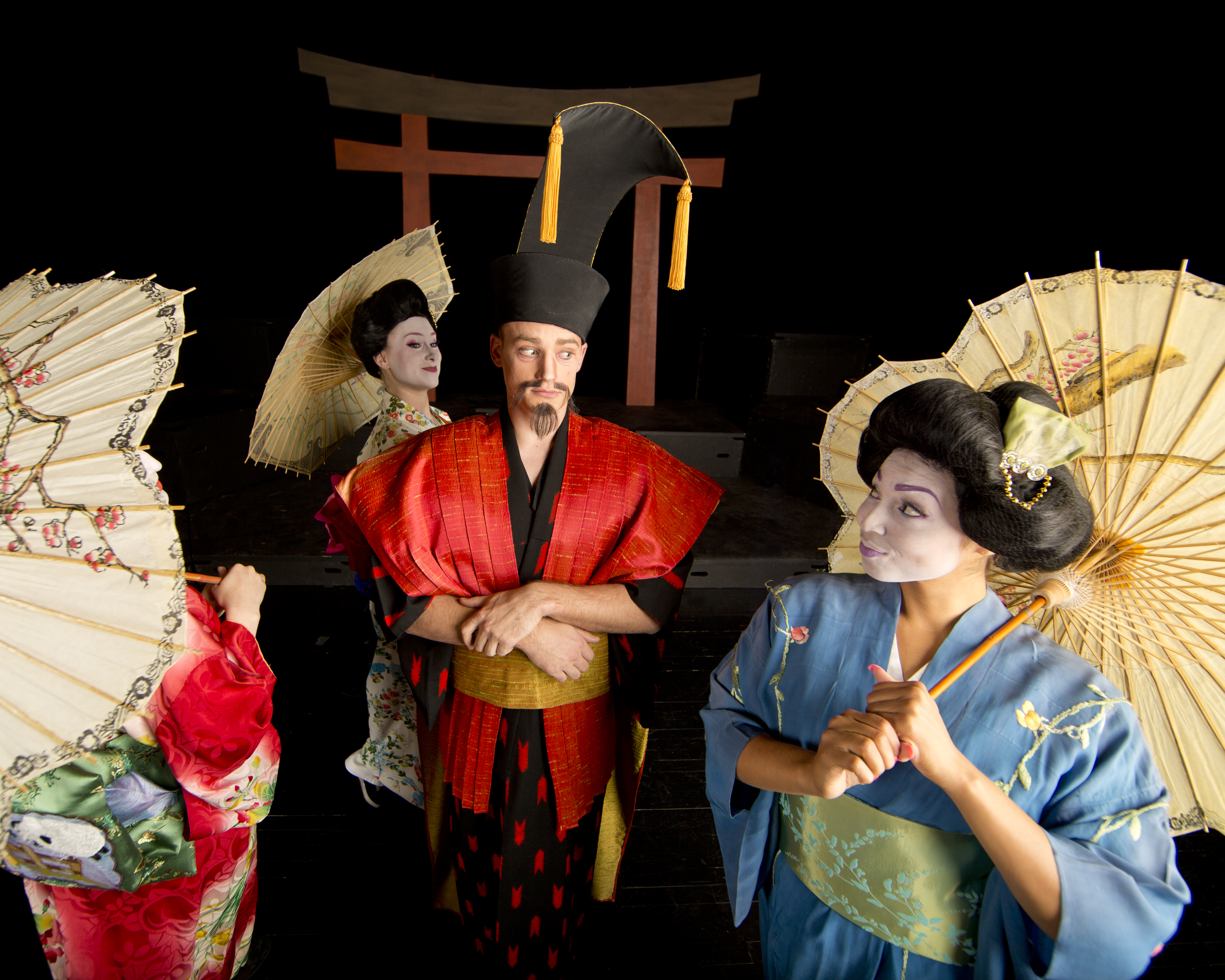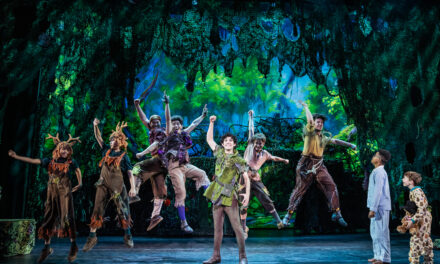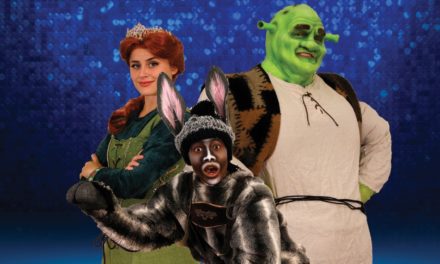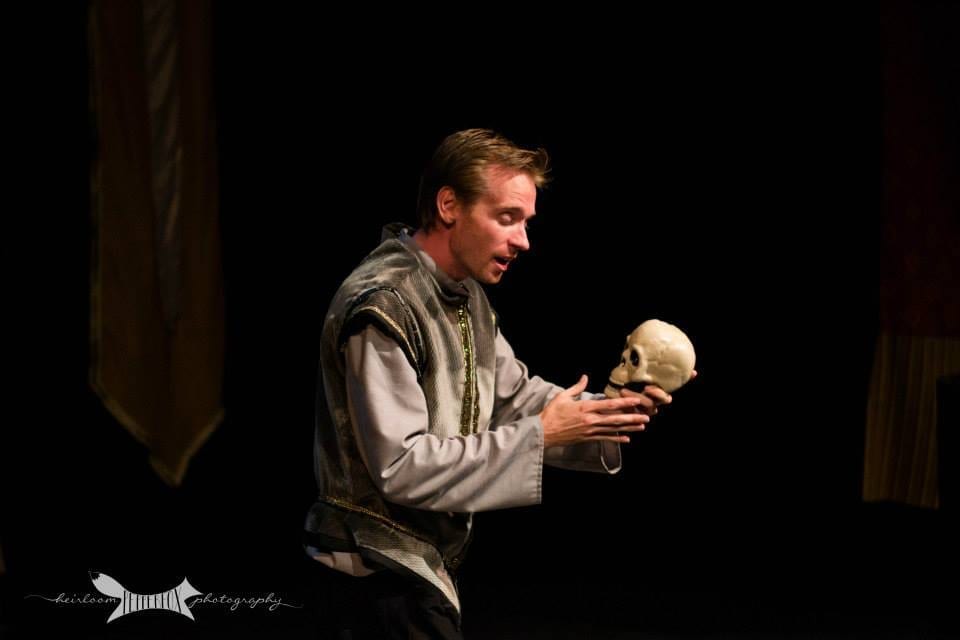PROVO — Gilbert and Sullivan paired up over 120 years ago and created 13 (well, technically 14) operettas, most of which are still quite regularly performed today. The “Big 3” (H.M.S. Pinafore, The Pirates of Penzance, and The Mikado) are among the most performed works of all time. Some people have stated the belief that The Mikado is director-proof, meaning that nothing can be done to this show that will make for a poor production. Unfortunately BYU School of Music’s current production dispels that rumor.
The plot of The Mikado is readily available through a simple Google search, so I won’t repeat it here. It has been one of my favorite shows since I was small, and I jumped at the chance to see what BYU could do with this work. Let me state from the beginning that I am not a Gilbert and Sullivan purist. I do not believe that their works are to be preserved in amber and presented as originally done. Indeed, I have participated in the production of many non-traditional settings.
So let’s start with the good points. The scenic and lighting design by Michael Handley was beautiful, and I appreciated his excellent use of projections as backdrop. Costume designer Lyndi Mecham created lovely quasi-authentic costumes including excellent hats for the leads. (Pooh-Bah’s hat must be seen to be believed.) Musical director Aurelia Andrews did a wonderful job as both vocal coach and performance accompanist.
Jubal Joslyn and Korianne Orton Johnson make a lovely Nanki-Poo and Yum-Yum, respectively. They have a nice chemistry together and both have excellent voices for the roles. Their first act duet, “Were You Not to Ko-Ko Plighted” was very good. Heather Foutz as Katisha acted the part very nicely with the requisite evil. Her voice lacked a little power on her first entrance, but she warmed into the role and by the second act duet with Ko-Ko (“There is Beauty in the Bellow of the Blast”) she was in full stride. The brightest spot in show, though, was Brandtley Henderson as Ko-Ko. The mood lightened and the pace quickened whenever he stepped onstage. His rendition of “Tit-Willow” was wonderful, and his duet with Katisha (“Bellow”) was superb. He had great comic timing and excellent physicality as Ko-Ko. (As a side note, the leads were double-cast and I did see the opening night cast.)
The bad points, however, overwhelmed the show for me. As I stated before, I am not a traditionalist, but I firmly believe that you must start from a point of respect for the material. I don’t believe that director Isaac Hurtado did. Also, I feel that the actors must completely “buy into” the actions of their characters for the humor to create suitable performances. Unfortunately, I felt the actors were ”winking and nudging” through the jokes. I groaned a bit inside when I saw the cover of the program with the Karate Kid-like poster, but I accepted it and forged ahead with the production anyway. The men of the chorus were dressed throughout and named in the program as “Cobra Kai Guards.” (Um… Okay.) Then Pish-Tush came onstage, and I feared we were in for it. I’m not sure what, aside from a cheap joke based off the character’s name, Hurtado’s goal for the character, but I found that character distasteful from start to finish. I certainly don’t blame the actor—Dylan Glenn—who did the best he could with it. From the Bugs Bunny buck teeth to the constantly adjusting bustle, it was a distasteful and entirely unnecessary caricature and greatly detracted from the overall effect of the show. The decision to have the Mikado speak in broken pigeon English was cringe-worthy. Not another character in the show spoke in anything even closely resembling it, and even if Hurtado’s goal was to stick with the Karate Kid theme, it was a bit of a stretch.
In most productions, especially in recent years, the “Little List” song is frequently rewritten; the folks at BYU did a good job with this, but had perhaps a few too many inside jokes regarding their unique university and community. But this tendency towards inside jokes happened throughout the show in small changes made to dialogue and other lyrics. Finally, I still cannot quite understand why Katisha was given “magic powers” to control people’s actions. If she had this power, how could Nanki-Poo have fled from her in the first place?
With all the resources that BYU has at its disposal, and with the history of excellent productions I have seen there, I had expected so much more from this production. But it’s important to realize that many people in the audience seemed to enjoy the show very much. Perhaps I just went into this with too high of an expectation. Unfortunately, with the few exceptions noted above, there is little to recommend in this production. I truly wish it were not so.








